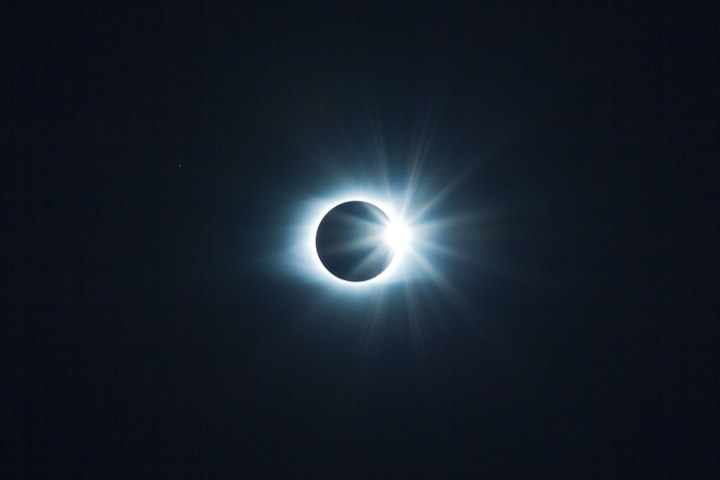70,000 years ago, our solar system was invaded by stars
The "Schultz Star" incident

The Milky Way is a huge galaxy with hundreds of billions of stars, and the Sun is just one of the not particularly impressive stars, which, together with many stars in the Milky Way, are orbiting around the center of the galaxy, such a situation does not prohibit us to worry about the number of such a huge number of stars in constant motion, over time, the Sun will not hit other stars?
The Sun's probability of hitting other stars is very low, but as long as there is a star "passing" near the Sun, its strong gravitational force may also have an impact on various objects in the solar system, especially those small objects, they are likely to deviate from their original orbits, so that the risk of the Earth being hit by small objects Significantly higher, for us humans, this is not good news, after all, we all know what happened to the dinosaurs.
So is this possible or not? Our fears are not superfluous, because scientists have found that about 70,000 years ago, the solar system has been invaded by another star.
This star, Schulz's Star, is a red dwarf star in the sky, located in the constellation Karin, about 20 light years away from us, and observations show that this star has a mass of 0.095 (±0.006) times that of the Sun and a radius of about one-tenth of the Sun, in addition to It has a massive companion star with a mass 0.063 (±0.004) times that of the Sun and is a brown dwarf.
Since all the stars in our galaxy are in motion and their trajectories cannot be perfectly synchronized with the Sun, most of the stars we observe have more or less certain velocities, which, in general, can be divided into "tangential velocities" and "radial velocities". radial velocities".
We can simply understand that the "tangential velocity" is the velocity of the star concerning us in one of the directions "up, down, left or right", while the "radial velocity" is the velocity of the star concerning us in one of the directions "up, down, left or right". radial velocity" is the velocity of the star concerning us in one of the directions "near, far".

"One of the reasons why Schultz's star has caught the attention of scientists is that it appears to us to have almost no "tangential velocity", while it has a relatively fast "radial velocity It has a relatively fast "radial velocity" (about 82.4 km/s) and is oriented away from us, so if we go back in time, then at some point in the past, this star was very close to the Sun.
After the discovery of the Schultz star anomaly, scientists have carefully modeled the star by its distance, direction of motion, velocity, and the gravitational field of the galaxy, and after running tens of thousands of simulations, the result is that there is a 98% probability that the star entered the solar system about 70,000 years ago The closest distance to the Sun is about 52,000 astronomical units, which is roughly 0.82 light years.
According to this simulation, the distance between "Schultz's star" and the Sun is already less than 1 light year, to know the real edge of the solar system is actually "Otter Nebula", which is a huge globular nebula, its radius is at least 1 light year, and this also This means that if this is the case, this star has invaded our solar system.
However, it is too hasty to say that our solar system was invaded by another star based on computer simulations alone, and more evidence is needed to make this claim more credible.
Scientists speculate that the total mass of Schultz's star and its companion star could reach about 15 percent of the Sun's mass and that the gravitational pull of such a large mass would have a significant effect on small objects orbiting in the outer reaches of our solar system, so much so that 70,000 years later, we can still find some traces.
According to this idea, scientists began to work on searching for small objects that might have orbital anomalies. Follow-up studies have shown that such small objects exist in the solar system, and their number is not small, so far, scientists have found about 400 small objects have exaggerated hyperbolic orbits, which is very different from the common elliptical orbits of small objects in the solar system.
Scientists believe that these small objects undoubtedly provide strong evidence for the above simulation results. It is conceivable that about 70,000 years ago, Schultz's Star invaded the solar system with its companion star and "brushed" the Sun at a distance of less than 1 light year, and under the influence of its gravity, some of the smaller objects that were close to it The orbits of some of the smaller objects close to it have become anomalous.
Fortunately, the event does not seem to have caused any harm to the Earth (otherwise there might be no humans on Earth), but we are more concerned about whether the solar system will be invaded by other stars again in the future, but the bad news is that scientists have found a star approaching the solar system.
The star, Glimpse 710 (Glimpse 710), is located in the sky in the constellation Serpens, about 62.3 light-years away, with a mass of about 57% of the Sun and a radius of about 58% of the Sun, and analysis based on known observations suggests that it will arrive near our solar system in about 1.4 million years It has an 86% chance of breaking into the solar system's "Otter Nebula".
Of course, we do not have to worry too much about this, after all, there are still up to 1.4 million years, after such a long period of development, I believe that human technology has been developed enough, and should be able to solve the threat from the "Glimpse 710".
Well, that's all for today, welcome to follow us, we'll see you next time.
About the Creator
Carlo Phil
Science and art are two sides of a coin






Comments
There are no comments for this story
Be the first to respond and start the conversation.